R4E PROJECT- THE BASICS
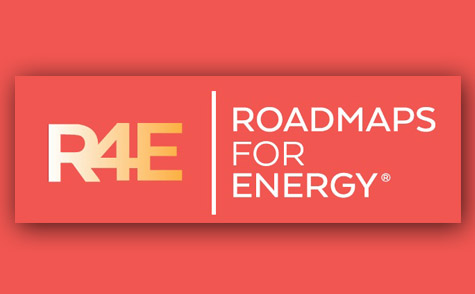
1. PROJECT DESCRIPTION
The “Roadmaps for energy” project isfunded through Horizon 2020 program within the Call H2020-EE-2014-3-MarketUptake.
The aim of the “Roadmaps for energy” project is to create a roadmap for each of the following 3 “Smart” areas: buildings, mobility and urban spaces. These roadmaps contain specific projects, structured within a timeline, they will have the necessary political commitment, and will be consistent with the city strategy. The project is following an innovative methodology based on participatory “workshops”, which involve policy makers in the concerned areas, municipal technicians and experts, private companies, leading organizations and associations, etc. Thus, it provides us with a unique view of how buildings, mobility and public spaces of the city should become in the medium to long term, and what activities and projects should be undertaken to achieve this.
The project started on March 1, 2015 and will last for 36 months with a total budget of nearly 2 million euros.
Figure 1. Project Planning.
The city of Eindhoven is the project leader, and the following cities are involved; Newcastle (UK), Istanbul (Turkey), Tallinn (Estonia), Forli (Italy), Palermo (Italy), and two Spanish partners, Sant Cugat del Vallès and Murcia.
Figure 2. R4E Partners
The project has three areas of action to work on and create roadmaps for energy:
Figure 3. Focus areas of the project
2. GOAL
There are two main differences between conventional energy strategies and these Roadmaps for Energy.
- First of all, the specific and profound commitment of key local actors (stakeholders from here on) from each city, which have been immersed in these roadmaps from the beginning.
- Second, the method used in planning; from front to back, where the project starts with a joint vision of an ideal future for the year 2050.
Having established the goal we wish to reach, a roadmap is developed with structured, realistic and feasible projects, assuring the provision of adequate funding as well as the necessary political commitment to turn them into reality. The main challenge for the partners in the R4E project is to learn to work together in developing a joint vision of the city, and to initiate joined activities to promote the development and implementation of innovative energy strategies and initiatives, a result of the work achieved within the project and its roadmaps.
As a result, 16 visions are created with their respective roadmaps for the 8 participating cities, these visions are the result of the joined contributions from the municipalities and stakeholders in each city, its backbone being innovation and sustainable energy policies.
3. METHODOLOGY
The project is divided into 4 phases:
Figure 4. Phases of the project
3.1 PHASE 1: AMBITION SETTING
The start of the project commences with the celebration of the first project workshop, called “Ambition workshop”. In this workshop, all agents involved in the project in each city, and depending on the needs and characteristics of their aspirations, establish the ambitions of their city in the selected actionable areas. In this first phase we also select the “drivers for change” . Each city chooses 4 drivers for change of a collection of 18, which has been designed from extensive interviews with 25 European experts from different fields. These 4 chosen drivers must collect the ambitions that are the result of the first workshop.
Figure 5. Sample of 8 drivers for change
The results of this first phase of the project are published in the “Ambition Report”.
Figure 6. 8 ambition reports, one per city.
3.2 PHASE 2: VISION DEVELOPMENT
From the 4 selected drivers for each area, in the second workshop called “Scenario Workshop”, ideas and proposals that mature these drivers are provided adding more detail to each one of them and taking into account the particularities of each city.
During this workshop, a graphic illustrator specializing in smart urban environments creates a visual composition of each city to visualise what it would look like in 2050 in response to the particular services and requirements proposed by the groups.
Figure 7. “Vision development” workshops
After the refinement process with the partners’ experts, each city ends up with a Vision of how the future should look like in both of the chosen focus areas.
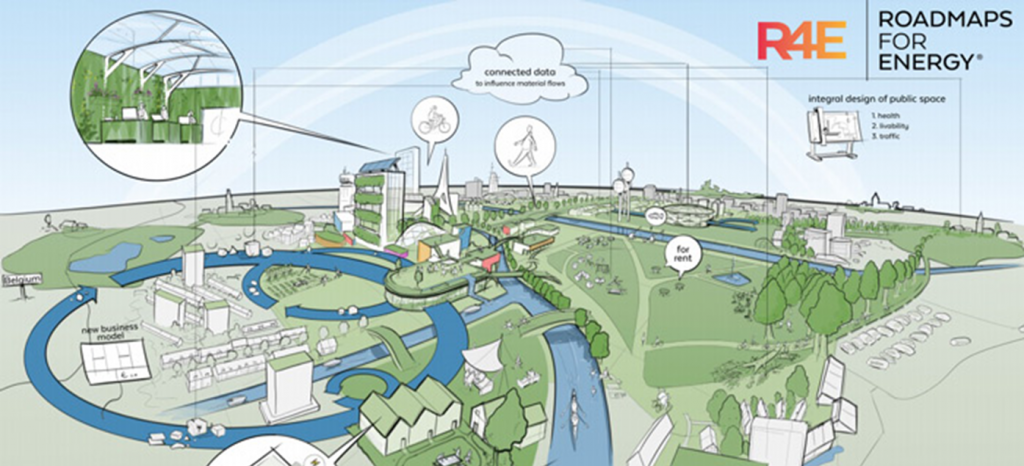
Figure 8. Future vision of Eindhoven.
3.3 FASE 3: ROADMAPPING
Once the Vision Development phase has concluded, it is time to define each of the projects that will allow us to develop and structure the way in which to achieve the goals and aspirations set out in the previous phase. In order to materialise this work, we rely on interviews with experts in the 3 areas covered by the project.
Figure 9. Example of Roadmap Eindhoven for public lighting until 2025
3.4 FASE 4: PROJECT PORTFOLIO
The last phase will be completed developing the joined collection of projects and actions proposed in Phase 3 in detail. These projects must be defined in terms of scope and objectives, will be planned and structured within the timeframe of the city strategy, they will include a budget and an allocation of specific resources, and have the support of policy makers to guarantee they become reality.
JOIN US IN DEFINING HOW WE NEED OUR CITIES TO BE IN THE FUTURE

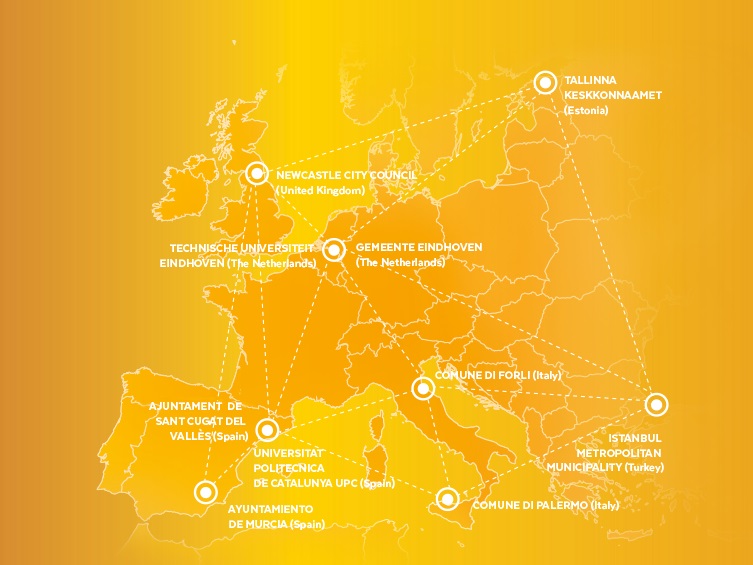


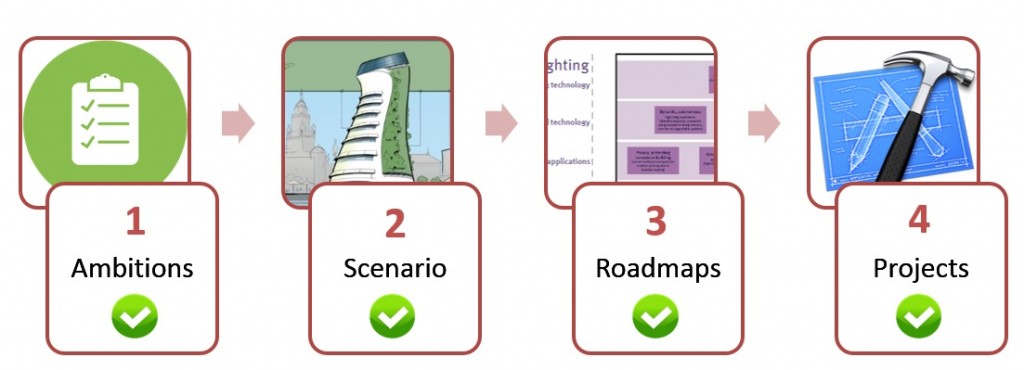
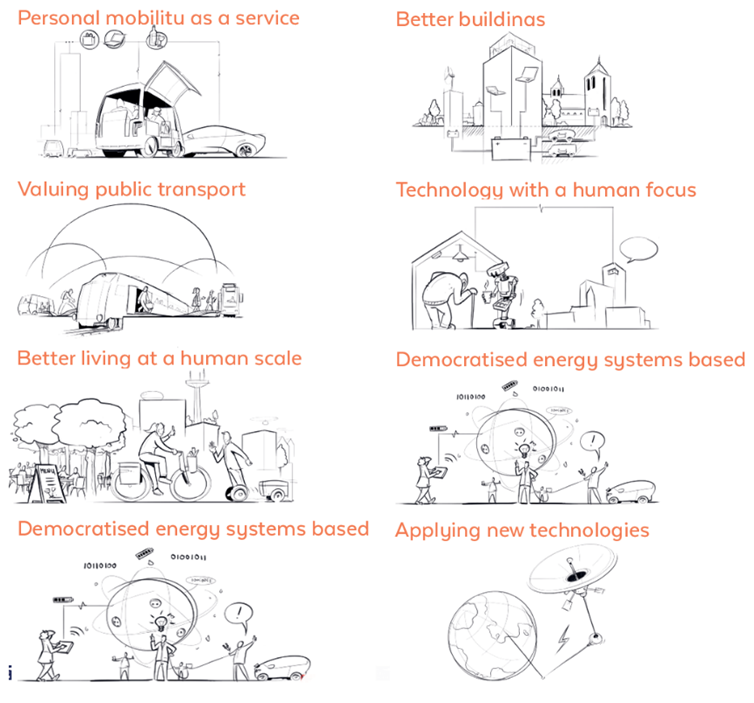

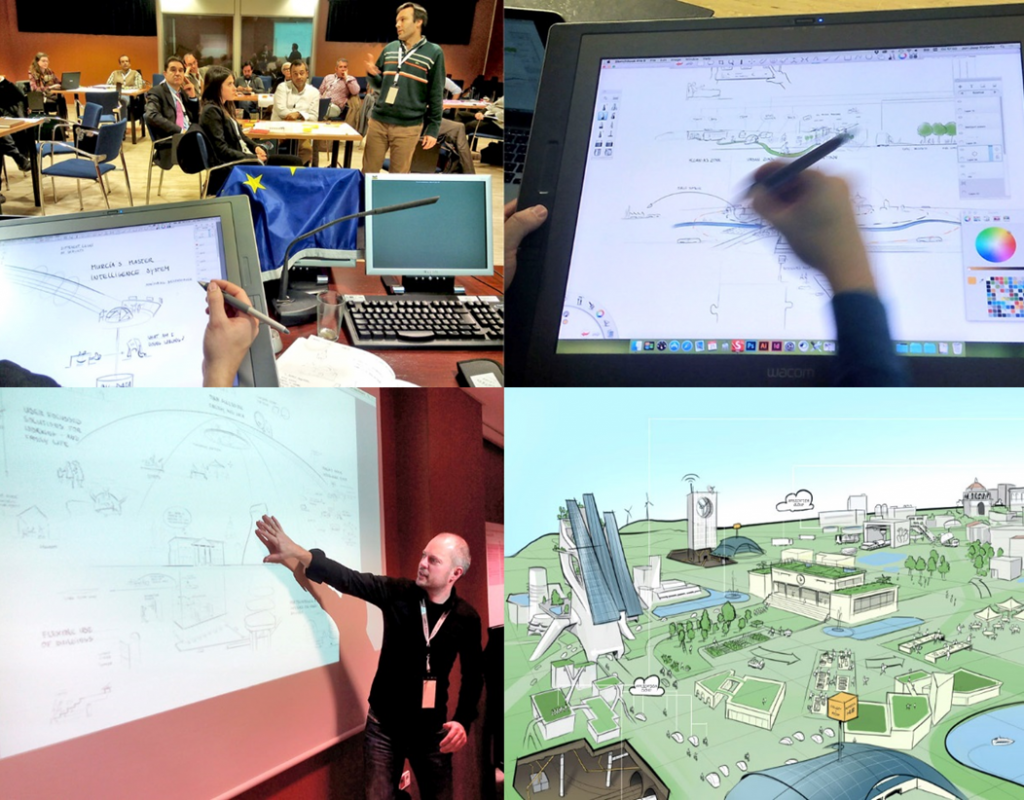





Leave a Comment